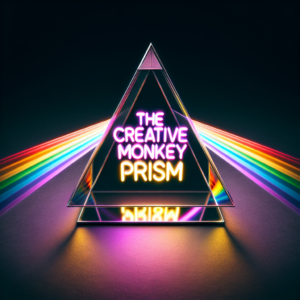Guided Meditation and Audio Tools
Sometimes using external guides can help kick-start visualisation practices.
- How to practise: Listen to guided meditations that narrate imagery, such as walking through a forest, meeting your future self, or exploring a starry sky. Later, practise recreating this imagery without the guide.
- Purpose: Guided practices provide structure initially, helping your mind become familiar with creating vivid mental imagery.
Third Eye Visualisation
The third eye (or the sixth chakra) is often associated with insight and intuition.
- How to practise: Close your eyes and focus on the space between your eyebrows. Imagine a glowing orb or a soft light in this area—it could be purple, indigo, white, or any colour that feels right to you. Let the light expand and radiate, illuminating insights or visions.
- Purpose: Activating the third eye can help unlock creativity, clarity, and spiritual awareness while easing mental clutter.
Releasing Mental Clutter through “Visualisation Clearing”
Letting go of worries or stagnant mental energy can make space for more vivid imagery.
- How to practise: Visualise your thoughts (e.g., worries, habits, or negativity) as tangible objects—clouds, leaves, or even ropes. Imagine them being gently carried away by the wind, a flowing river, or burning away in a fire.
- Purpose: This technique creates mental clarity and frees your mind to explore deeper visions.
Build a Safe and Peaceful Space
Guided imagery can help create a mental “sanctuary” where you feel calm and safe.
- How to practise: Imagine a serene location, like a forest, a beach, or a cosy room. Focus on the details: the sounds, smells, textures, and colours. Over time, this becomes your go-to mental retreat during stress or when winding down for sleep.
- Purpose: This practice promotes emotional safety and reduces anxiety while developing visualisation skills through focus on detail.
Visualise Solutions to Problems
Visualisation is often used in psychology and coaching to mentally rehearse success and resolutions.
- How to practise: Before sleeping or during meditation, choose a challenge you’re facing. Close your eyes and imagine yourself solving it in your ideal way. See yourself feeling confident and visualise each step of the solution unfolding.
- Purpose: This process builds confidence, prepares the mind for success, and boosts problem-solving skills.
Use Mandalas or Sacred Geometry as an Anchor
Focusing on patterns like mandalas or sacred geometry can deepen visualisation.
- How to practise: Imagine a glowing mandala or flower of life forming and spinning gently before your closed eyes. Let its symmetry absorb your thoughts and expand into new colours or patterns naturally.
- Purpose: This promotes mindfulness, creativity, and focus while stimulating the mind’s ability to generate imagery.
Bonus Tip: Regular Practice and Patience
Strengthening visualisation is like training a muscle—it takes time and consistency. With these techniques, dedicate 5–20 minutes a day, and you’ll begin to notice more vivid and meaningful mental images over time.










